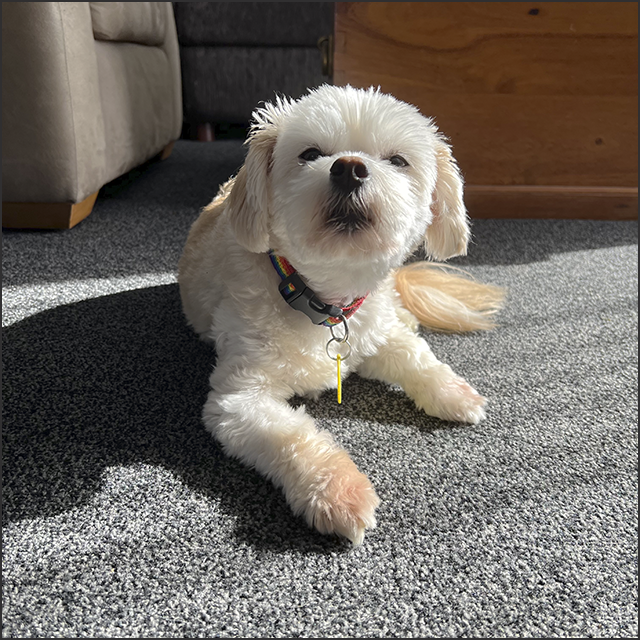A picture is worth a thousand words, as the old adage puts put it, and it’s meant to describe how much easier it is to convey information (and, by extension, meaning) through images rather than words. The advertising industry alone certainly suggests that’s true. At the same time, though, images can also have their own stories. This post is about exactly that.
I’ve said many times that most of my photos have stories behind them, something I mentioned most recently back on March 5 . Sometimes, though, the story is about the HOW of the photo, how I took it, whether technically or even just what I was going for.
The photo up top is an example of that. On the surface, it’s just a photo of Leo being cute, something that was underscored by the caption I gave it when I shared it on social media: “Leo promises he’s not judging you—he’s just basking in the sun.” That was true—he really was basking—but the first part was because he looked kind of like he was judging me. The story behind it is that I got down on the floor to take the photo from a low angle—his height—rather than from above as I ordinarily might do. Choosing the best angle for a photo often takes experimentation—like, for example, taking several photos from different positions. I mean, Leo’s cute regardless, but taking the photo from a more equal position that improves it, I think, like we’re entering his world for a moment.
Next is a photo I took a couple days earlier, but never shared online:
In this photo, Leo was laying on the back of the sofa, his favourite spot in the daytime because he can look at the world outside. For this photo, I used the “Portrait” setting on my phone which adds background blur (probably by reducing the depth of field). Technically, this is known as bokeh, and it’s kind of difficult to do on phones, which for the post part are “point and shoot” cameras (there are exceptions, and manual configurations are possible if one wants to learn the techniques). I never shared this photo on social media because the Portrait setting produced a photo in which Leo was quite dark—in shadow, actually—because of the window behind him. I had to adjust the light balance, something I find much easier to do on my Mac using Photoshop rather than the Photos app on my devices.
Finally, two more photos of Leo that I shared on social media on Sunday, March 17:
When I shared the two photos, I described them as “My boy and one of his toys,” and I said that Leo has for or five toys five he plays with the most often, and his toy bone is one of his top three. For the first of the two photos, just above, I again got down on the floor, this time on one knee, and lowered the phone until the bottom of the photo was just a bit below the top of the sofa cushion Leo was laying on. I liked the way his paw was on his toy bone, and the way the midday light from the window shone on him. There really wasn’t anything more to it than that.
The other photo I shared on March 17 (at left in the two-photo montage below) is one I actually took the previous evening, and in it Leo is standing on the sofa arm and I was sitting in my chair—roughly at the same level as him. I took it because I’d never seen Leo hold his toy bone like that before, going backwards from his mouth. It was a straightforward photo—and one I took vertically, not square as I normally do, so I could be sure to get the whole picture. However, I also took another one in Portrait mode (at right in the montage below), and that didn’t work: The photo focused on part of his toy bone, leave the rest of him blurry. This is why I don’t rely on Portrait mode—or any other automatic setting, for that matter. Instead, I try take several versions and I pick the best of them to share—if I share any at all.
What all this really means is that getting photos WE’RE happy with is about trial and error, using different techniques, different camera settings, different angles, etc., and see what we get. Fortunately, modern digital photography makes this extremely easy to do.
I’m definitely not qualified to comment on the technical or artistic merits of anyone’s photos (including my own), but I know this one thing: When it comes to our personal photos, what matters is that we like them. If we choose to share them online, and others also like them, too, that’s a bonus—but we have to please ourselves first.
I often share what I did to get a particular photo that I liked for the very same reason I share all sorts of things online: Because it may help someone else working on the same things (in this case, getting better photos). Seems to me that’s one of the best uses for the Internet. And in this case, it's a great reason to take more photos, too.





No comments:
Post a Comment